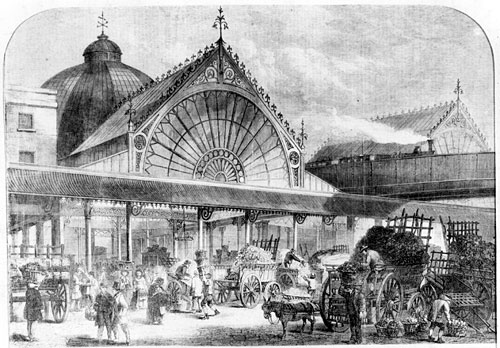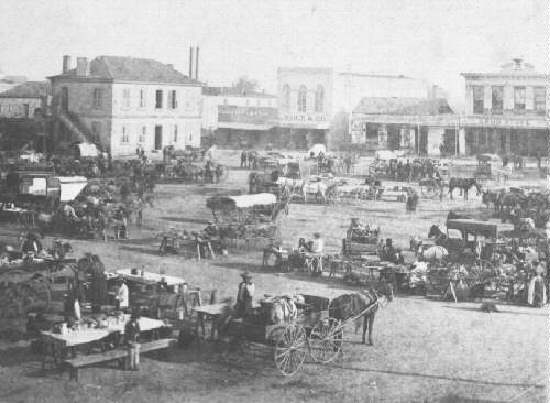By Joseph Paxton
Editor’s Note: Sir Joseph Paxton (1803–1865) was an English gardener, architect, and Member of Parliament, best known for designing The Crystal Palace. Paxton began publishing a monthly magazine, Magazine of Botany in 1834. In 1838, when Capsicum nomenclature was still in its infancy, Paxton wrote about a new chile pepper species that was called Capsicum ustulatum. “Ustulatum” means “cinder” in Latin, an allusion to its fiery heat. It is undoubtedly a hybrid, not a true species.
CAPSICUM USTULATUM.
(Burning Capsicum, Or True Chili.)
 Generic Character.—Calyx permanent, five-toothed. Corolla rotate, limb plicate, five-cleft. Anthers connivent, two-celled, dehiscing lengthwise.Sligma obtuse. Berry dry, inflated, and hollow, of a papery consistence, two to four-celled, many-seeded, naked. Placenta adnatc to the dissepiment. —Doris Gard. and Botany.
Generic Character.—Calyx permanent, five-toothed. Corolla rotate, limb plicate, five-cleft. Anthers connivent, two-celled, dehiscing lengthwise.Sligma obtuse. Berry dry, inflated, and hollow, of a papery consistence, two to four-celled, many-seeded, naked. Placenta adnatc to the dissepiment. —Doris Gard. and Botany.
Specific Character.—Plant frutescent, much branched. Branches flexuose, divaricate, angular. Leaves very large, ovate, acuminate, glabrous, as well as the petioles. Calyx entire. Peduncles usually solitary. Fruit angular, pendulous, from one and a half to two and a half inches long, covered with irregular protuberances, bright red.
Seeds of this very distinct and handsome species of Capsicum were originally received by us from J. Bateman, Esq., of Knyperely, and as it is new, valuable, and by no means unornamental, we have pleasure in introducing it to more general notice by the accompanying plate. The brilliant colour of the pods will render it an acceptable feature in the greenhouse during the winter months, as, by a little attention to the time of sowing, they may be induced to ripen at the above season, and will continue in this interesting state a considerable time.
It may appear inconsistent with the character of a botanical work to allude to the cultivation of an esculent vegetable, but the very ornamental appearance of this species, combined with its excellent qualities as a condiment, will excuse our notice of it; and we have no doubt that the few following hints will be generally well received by our readers.
The seeds should be preserved in the pods till they are required for sowing, and about the month of March they should be taken out and sown in shallow pans, covered with about a quarter of an inch of soil, and placed in a cucumber or other hot-bed frame, plunging the pots in the soil or bark which is usually spread over the bed for the suppression of steam. As soon as the plants have perfected their seed-leaves, they should be planted singly into small pots, and these pots again immersed in the hot-bed, keeping them as near as convenient to the glass throughout the whole period of their growth, and shifting them frequently and by slow degrees till they arrive at a fruiting state.
The soil used for potting should be a light loam, greatly enriched with decayed manure; and though they will grow tolerably well if placed on the flue of a vinery or other forcing-house, they thrive much better when supplied with a gentle bottom-heat by being plunged in bark or other fermenting material. In either case, a liberal supply of water is necessary, though much less so in the latter.
The house, pit, or frame in which they are kept, should always be maintained at a temperature not lower than 65 degrees Fahrenheit, and as little above this aa circumstances will permit; but a humid atmosphere is indispensable, and they will be much improved by frequent syringing, particularly when the temperature is usually higher than the above ratio, as they are very liable to the attacks of the red spider. These observations, however, apply only to the plants which have not matured their fruit, for after this period of their existence, they will continue healthy a much longer time in a lower temperature.
Used as an ingredient in pickles, this is decidedly the most valuable species with which we are acquainted, the pods having an unusual spicy and pungent flavour, but very agreeable when employed sparingly.
Our drawing was taken at Chatsworth in the autumn of last year, and we have cultivated it extensively both for culinary and ornamental purposes during the present season.
The generic name is derived from kapto, to bite, in allusion to the pungent qualities of the fruit of the species.
The specific appellation refers also to the remarkably hot and burning qualities of the fruit, and when thus superadded to the generie, implies that this species possesses these properties in an extraordinary degree. We received it under the name of “True Chili Capsicum.”
From: Paxton’s Magazine of Botany, and Register of Flowering Plants, Volume 5. Editor, Sir Joseph Paxton. London: Orr and Smith, 1838, pp. 197-98.








